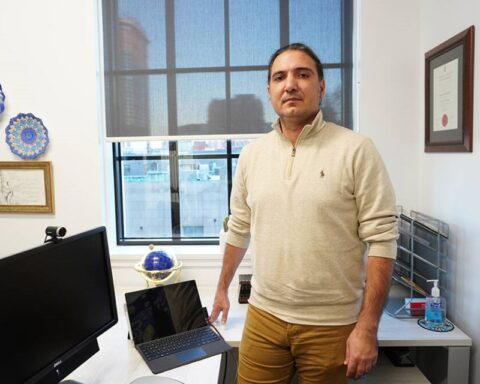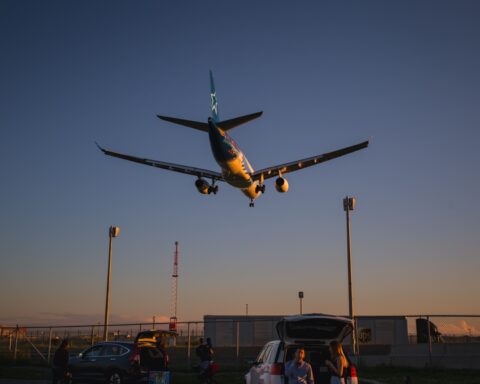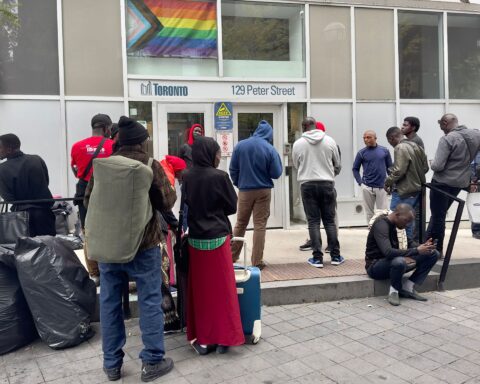In this week’s round-up of what’s been making headlines in Canada’s media: the federal government has a new plan to welcome immigrants that aims to reunite more families; women from ethnic communities in Canada call for a more inclusive International Women’s Day; and Saskatchewan language schools are dealing with a significant cut in provincial funding.
Family reunification, refugees a focus: McCallum
Canada will welcome between 280,000 and 305,000 immigrants in 2016, a significant increase from the number admitted in recent years.
According to Immigration Refugees and Citizenship Canada (IRCC), the 2016 target represents a 7.4 per cent increase in planned admissions compared to 2015.
As reported in the Indo-Canadian Voice, IRCC said in its Mar. 8 announcement that this plan will emphasize family reunification in order to address the current backlog in processing applications and reunite families more quickly.
“As we continue to show our global leadership, Canada will reunite families, offer a place of refuge to those fleeing persecution, and support Canada’s long-term economic prosperity,” immigration minister John McCallum is quoted as saying in the Voice.
The Conservatives criticized the Liberal plan to cut the number of immigrants accepted under the economic class.
2016 will also see an increase in the number of admissions under the Refugees and Protected Persons class to support the Liberal’s plan to resettle Syrian refugees, as well as increase the numbers of refugees accepted from other countries including the Democratic Republic of Congo, Colombia, and Eritrea.
Migrants without status in Canada have asked the government to grant them the same rights that are given to Syrian refugees and to process their claims for status that they say the previous Conservative government ignored.
The Conservatives criticized the Liberal plan to cut the number of immigrants accepted under the economic class.
“It is the responsibility of the federal government to balance the needs of the Canadian economy with our humanitarian responsibilities,” said Michelle Rempel, Opposition Critic for Immigration, Refugees and Citizenship, the Voice reported.
IRCC said the economic class will still make up the majority of immigration admissions in 2016, representing more than half of the total.
On Mar. 7, Quebec’s provincial government announced its new immigration policy, which also puts an emphasis on matching immigrants to the needs of its labour market. The plan, called “Together, We Are Quebec,” also aims to retain international students and temporary workers.
Other provinces, like Nova Scotia, are still negotiating with the federal government to gain authority over their immigration targets and say they won’t see changes in their quotas until 2017.
A more inclusive image of women in Canada
On Mar. 3, Canadian Immigrant magazine presented its third annual “Immigrant Women of Inspiration,” which focused on the theme of immigrant women in academia for 2016.
Ananya Mukherjee-Reed, Shalina Ousman, Parin Dossa, Leonie Sandercock and Purnima Tyagi are not only PhDs in various areas of study but “are pushing boundaries in education, in their passionate pursuit of knowledge, ideas and change.”
“In Canada, black women and other women of colour find themselves missing not only from movements for gender diversity, but also from seats of power.”
Some women say there is a need for more interfaith, intercultural events and dialogue to mark International Women’s Day (IWD) in Canada.
In a column for CBC Edmonton, Nakita Valerio wrote that rhetoric surrounding IWD does not promote intersectional or inclusive feminism.
She wrote that debates in Canada around issues concerning ethnic women, such as a Muslim woman’s decision to wear a niqab or a hijab, highlight how the day “accentuates the fact that equality for women in this country is still heavily tied to the individual’s background, religious, racial, or otherwise.”
In the Globe and Mail, Septembre Anderson wrote that the definition of “women” used in IWD discourse does not include women of colour.
“In Canada, black women and other women of colour find themselves missing not only from movements for gender diversity, but also from seats of power.”
Both columnists pointed out that while 2016 marks 100 years since women in several provinces won the right to vote, Asian and African women in Canada gained this right much later, a struggle which is not described in the commemorative materials. Anderson called on women in power to work with women of colour and use their positions to eradicate discrimination.
Uncertain future for Saskatchewan language schools
The Saskatchewan Organization for Heritage Languages (SOHL) says it is disappointed to learn the province’s Ministry of Education will stop providing it subsidies to run 80 heritage language schools. SOHL has been receiving provincial subsidies for 25 years and currently teaches over 30 languages.
The organization says the decision is a step in the wrong direction at a time when Canada is accepting many new immigrants and refugees who need welcoming environments.
“The schools focus on teaching language and culture to immigrants and refugees, and improving access to indigenous languages,” reports CBC. SOHL’s executive director Tamara Ruzic told the Regina Leader-Post that about 10 language schools have opened each year, many teaching Arabic.
She added that the $225,000 SOHL receives is “peanuts to the government.”
Minister of Education Don Morgan said that the decision was made for economic reasons, and added that the funding, which amounts to $4.58 per student each month, can be paid by parents.
“As a result of the announcement by the Ministry of Education, many of these non-profit heritage language schools will be faced with the difficult decision of whether they can continue to operate,” said Girma Sahlu, president of SOHL, in a press release.
The organization says the decision is a step in the wrong direction at a time when Canada is accepting many new immigrants and refugees who need welcoming environments and support in learning languages.
“The heritage language schools contribute to the retention of immigrants in Saskatchewan by helping people to maintain their culture, identity and traditions, while simultaneously learning about Canadian ways of life.”





